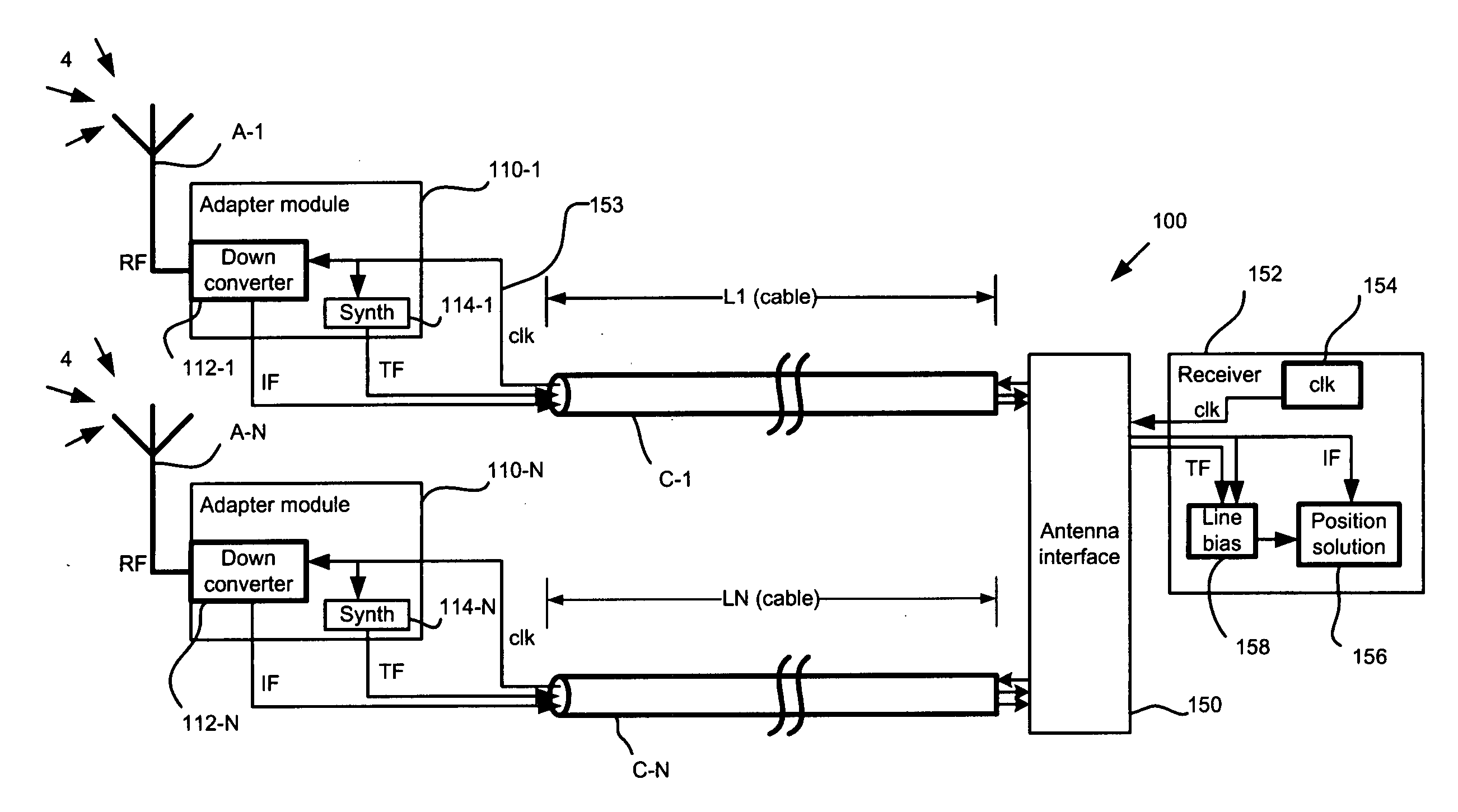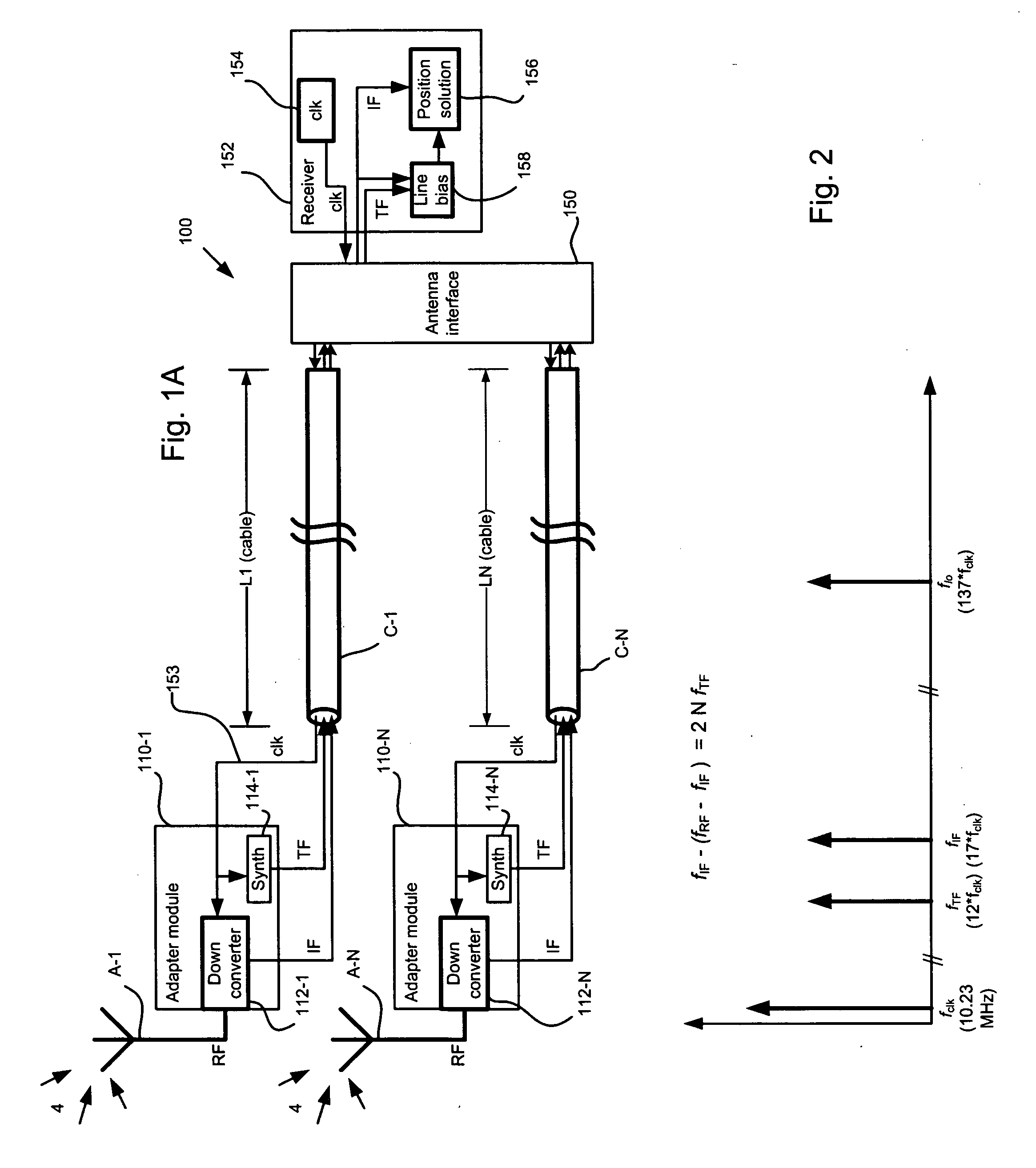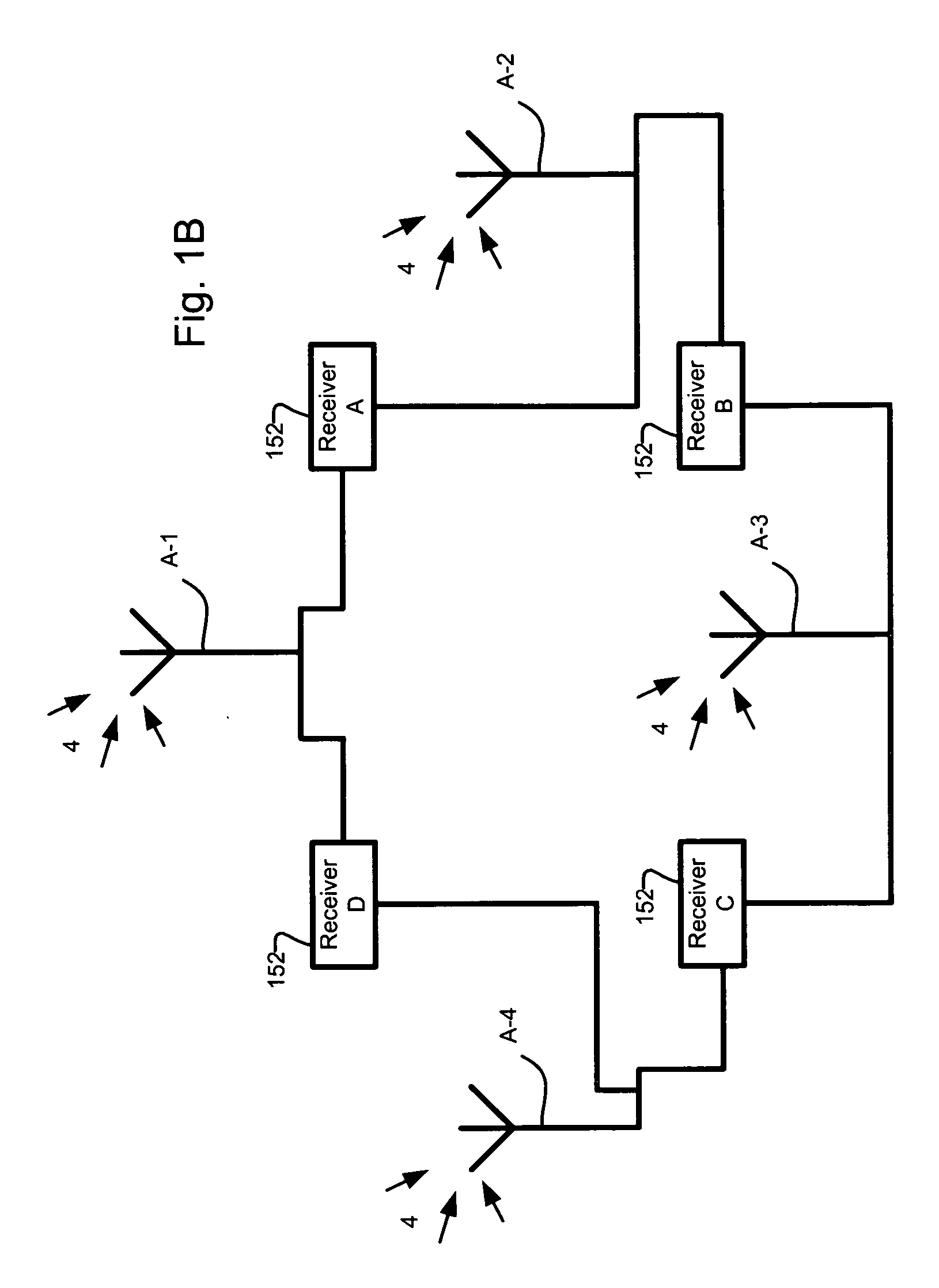GNSS line bias measurement system and method
a line bias and measurement system technology, applied in wave based measurement systems, instruments, navigation instruments, etc., can solve problems such as inability to address changes in line bias, and cannot be real-tim
- Summary
- Abstract
- Description
- Claims
- Application Information
AI Technical Summary
Benefits of technology
Problems solved by technology
Method used
Image
Examples
Embodiment Construction
[0034]FIG. 1A is a schematic block diagram showing a differential GPS system providing for line bias measurement and compensation, which system has been constructed according to the principles of the present invention.
[0035] In more detail, the position detection system 100 generally comprises a series of antennas A-1 to A-N. At least one antenna is required, whereas many systems can also include two or more antennas. These antennas A-1 to A-N receive carrier signals 4, typically from a satellite positioning or navigation system such as the GNSS and / or from one or more ground-based transmission sources such as pseudolites. Such carrier signals can actually come from many radio frequency (RF) sources, including those not intended for navigation. Such transmitters would include, but not be limited low earth orbiting (LEO) satellites or high definition television (HDTV) broadcast stations.
[0036] The antennas A-1 to A-N communicate with a common receiver 152, although in other configu...
PUM
 Login to View More
Login to View More Abstract
Description
Claims
Application Information
 Login to View More
Login to View More - R&D
- Intellectual Property
- Life Sciences
- Materials
- Tech Scout
- Unparalleled Data Quality
- Higher Quality Content
- 60% Fewer Hallucinations
Browse by: Latest US Patents, China's latest patents, Technical Efficacy Thesaurus, Application Domain, Technology Topic, Popular Technical Reports.
© 2025 PatSnap. All rights reserved.Legal|Privacy policy|Modern Slavery Act Transparency Statement|Sitemap|About US| Contact US: help@patsnap.com



